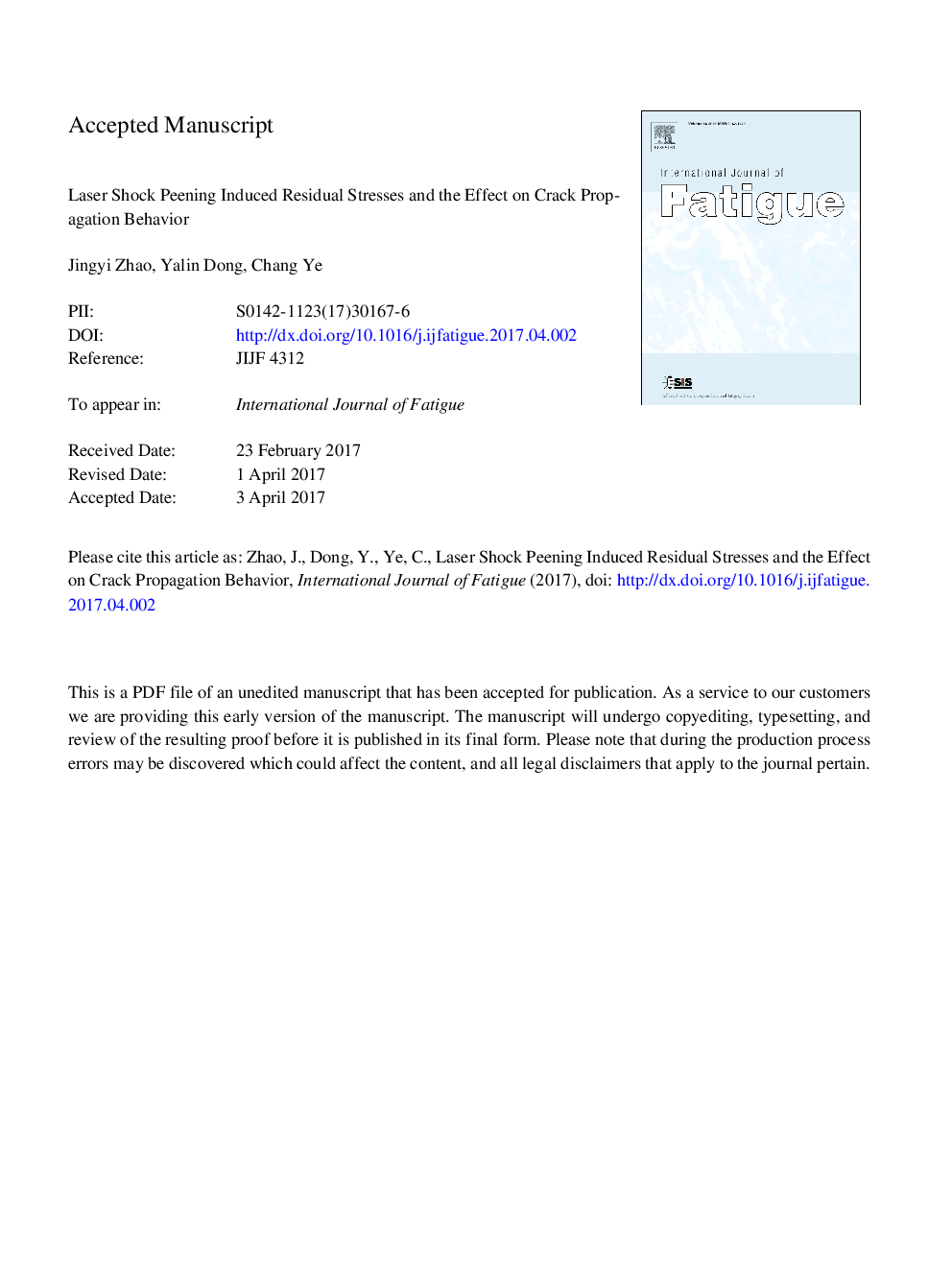| Article ID | Journal | Published Year | Pages | File Type |
|---|---|---|---|---|
| 5015147 | International Journal of Fatigue | 2017 | 24 Pages |
Abstract
Laser shock peening (LSP), as a powerful surface engineering technique to improve the fatigue performance of metallic components, requires elaborately designed process pattern to maximize its benefits. In this study, a numerical method, combining finite element method (FEM) and residual stress intensity factor (SIF) analysis, was used to predict the effect of LSP pattern on the crack propagation behavior of the compact tension (CT) samples. The 3D FEM model was fully benchmarked using the mesh sensitivity study and time step calibration. The model was further validated using residual stresses data measured using the X-ray diffraction method. After that, the simulation of LSP of CT sample was conducted using five representative cases, and the corresponding residual stress fields were obtained. A mixed-mode SIF model was then applied to evaluate the effect of the residual stress field in resisting crack propagation. Based on the calculated residual SIFs from different LSP patterns, the best LSP patterns in terms slowing crack propagation speed were identified. To validate the simulation results, LSP experiments were conducted on CT samples using two identified LSP patterns and the crack growth rates were tested. The experiment results were consistent with the numerical prediction. This work demonstrates that FEM model combining residual SIF analysis can be applied to design appropriate LSP patterns on components with complex geometries.
Keywords
Related Topics
Physical Sciences and Engineering
Engineering
Mechanical Engineering
Authors
Jingyi Zhao, Yalin Dong, Chang Ye,
